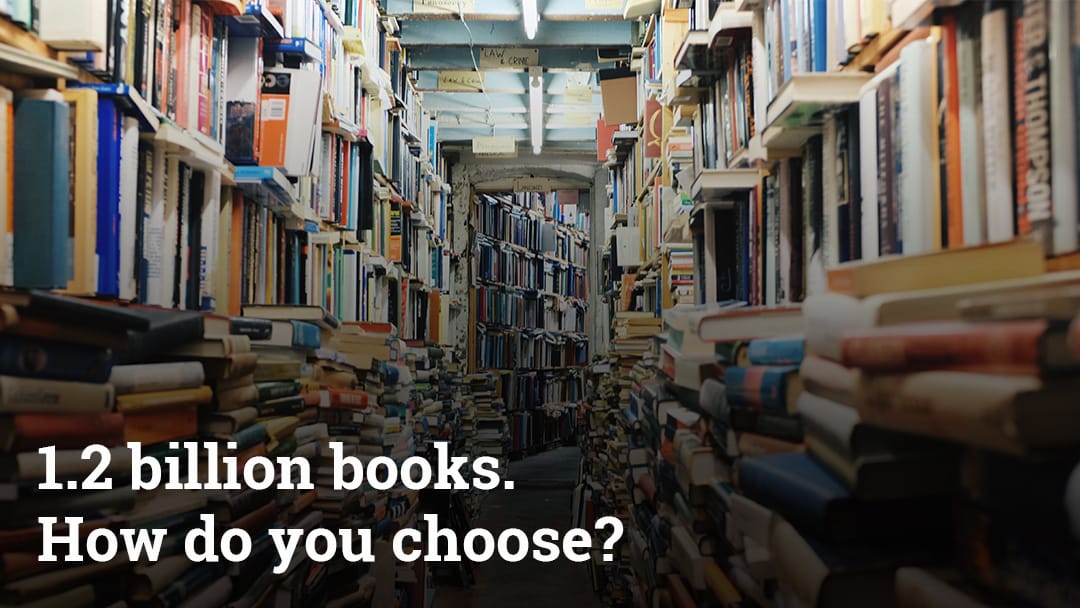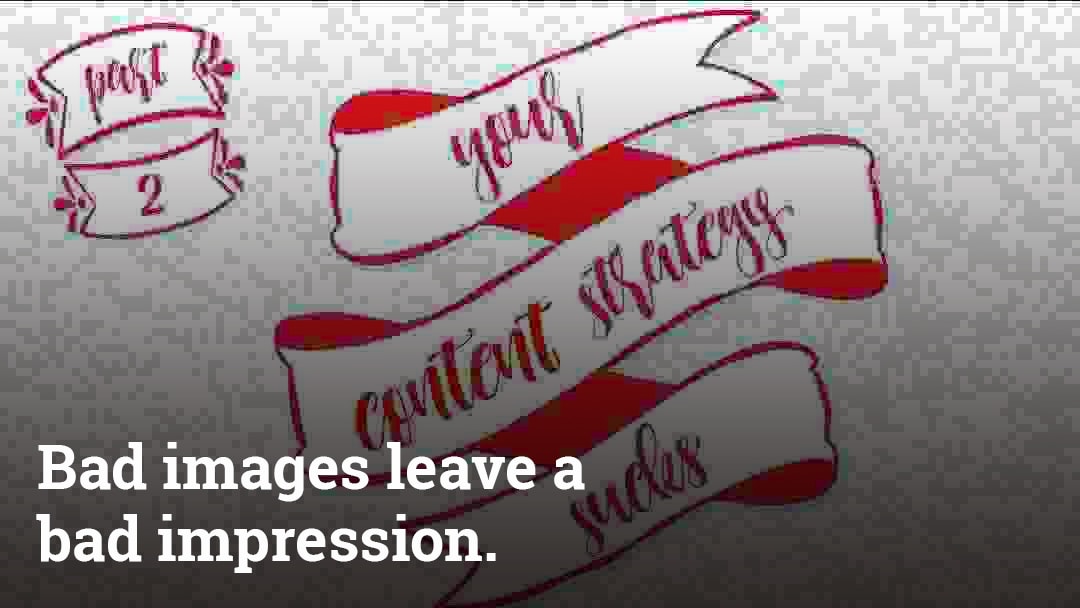
Your website sucks because your content strategy sucks
If your website isn’t getting any traffic, it’s likely that your content sucks.
In part one we told you that your website sucked because your online strategy sucked. Hopefully, you sat down afterward and had a good hard think about who you are, what you offer, and why it matters.
You identified your target market and figured out where they were and how to communicate with them effectively.
You found yourself a CRM and imported your customers from Excel.
You said, “Hey! The internet is not the Yellow Pages!” and vowed to make your site an interactive marketing tool and a lead generation machine.
But your website still sucked. Because it didn’t generate any traffic. Because your content strategy sucked.
Your site was still a boring old sales brochure.
We’re going to help you fix that. But first, let’s talk about why good content is so important.
Your goal in marketing your business is to raise awareness, preference, then loyalty for your brand. So you advertise. But everyone is advertising and your audience is so bombarded with advertising that they ignore 98% of it. So how do you reach them and let them know that the two of you are meant to be together?
The same people that are ignoring your advertising are searching for information that you can provide. And they prefer to get that information from an article or video.

Let’s pretend the internet is a library
Let’s pretend that the internet is a huge library for a minute.
Sometimes people go to the library looking for something specific – a book on gardening in the Southeast or Truett Cathy’s biography.
Do you grab the first book you find and get out? I don’t. More than likely you find your section and start to browse. You find three dozen books on gardening in the Southeast and they all look pretty good. You wonder if maybe Elon Musk’s biography would make for more interesting reading.
You are overwhelmed with choice, but you are determined. Consciously and unconsciously you are weighing the factors of which book to choose and what good content means to you.
Is it relevant, original, informative, clear, entertaining, engaging, or compelling? Is it by an author you know and love? Was it recommended? Does it have a great title? A fantastic cover? Is it well-written? Is it a best seller? Has it won awards?
All of these factors go through your internal judgment calculator as you narrow down your options.
The audience for your website goes through the same process of deciding whether to engage with your site and incredibly quickly. One Canadian study showed that internet users make that decision in 1/20 of a second, literally the blink of an eye.
The fact that you have mere milliseconds to engage your audience is daunting if not outright discouraging, but there it is.
Let’s break down the deciding factors that help determine why your content may suck…
Your title sucks
If your content is a book, then the headline is the title. Your headline is the first and possibly only chance to grab your audience and reel them into your content.
On the average, five times as many people read the headlines as read the body copy. – David Ogilvy
There are plenty of articles on the importance of good headlines, full of juicy tips and tricks. But the fact is that you will need to test them out in your own voice and style, keeping in mind everything you learned when you formed your strategy.
Your body copy sucks
If writing a good headline is hard (and it is), writing good body copy is a downright bitch.
With that said, there are formulas that you can follow. We’re fans of copyblogger.com and they have a great article called 10 Ways to Write Damn Good Copy. It’s a good place to start.
But the fact is that you will only find out what works best for you by writing. It’s your content, your company, and your audience. Write and publish and track your results. The wonderful thing about content marketing is that you will know quickly whether it is resonating with your audience.
Your content doesn’t tie into your strategy
Unless you are a large news site, your content should be focused on your area of expertise. This is your content strategy. You know your audience, so ask them what they are looking for then write articles about that. Make a list of questions you can answer, then answer them.
Potential users of your site, product or service are asking Google questions that your content could be answering as we speak. Answer their questions clearly and consistently and they will come. (Well, with a little help from a few other factors).
You may be tempted to fill your site with articles about why what you’re offering is so great, but resist it. When is the last time you re-read a sales brochure?
You may be afraid to give away too much of your knowledge for free. Don’t be.
There are two incredible benefits of providing good content which answers questions for your potential customers: 1) Your content is picked up by search engines and displayed first. And 2) You have provided value to your customer and positioned yourself as an expert before meeting them.

Your images suck
We’re going to dive deep into why your design sucks next week, but for now, just make a note that the internet is a visual medium and you want the images in your content to stand out in a good way.
You don’t need to be an artist, but you do need to have an eye. If you don’t (and that’s fine), then run your site by someone who does.
Ideally, you’ll have a brand guideline which establishes a standard visual tone for your imagery. If you don’t, here are a few tips:
- Use relevant images.
- Use professional photography if possible. This is especially important if you are selling a product. Doubly important if that product is food.
- Don’t use clipart. For any reason besides satire.
- Learn to optimize your images for the web. Sizes, ratios, and optimization through a tool like optimizilla are all important.
- Learn when to use jpg vs png vs svg.
Your broken links suck
This one dips into development and site maintenance a bit, but it bears repeating here. There’s no good excuse for broken links. Find them and fix them.
Etcetera
There are more reasons that your content may not be generating traffic, but they get technical and SEOriented. Understanding the buyer’s journey and creating content for each stage is important. Targeting long-tail keywords and optimizing your content for search engines as well as your reader is important. Taking your content strategy and creating a content calendar is important. And on and on…
One last tip: don’t go into the rabbit hole of SEO before vowing to create original, relevant, and engaging content. Trust me, you’ll be put off before you start. Beyond that, driving traffic to your content before ensuring that it is optimized for conversion is filling a leaky bucket.
If you are beginning to suspect that your site sucks, sign up for a free site rescue audit.
Next up: your design sucks. We’re excited about this one and we have a lot to say. See you next week!
Ian Kennedy
Strategist
Ian has worked in design and development for twenty years and has formed strong but loosely-held opinions about both. When he isn’t obsessing and ranting about strategy, design, and development, he’s juggling four kids, teaching programming for a local STEAM school, and working on AthFest 2017. His websites suck too, but not as bad as yours. He likes parties with snacks.